![]()
![]()
![]()
Use LEFT and RIGHT arrow keys to navigate between flashcards;
Use UP and DOWN arrow keys to flip the card;
H to show hint;
A reads text to speech;
24 Cards in this Set
- Front
- Back
|
characteristics of acute leukemias |
|
|
|
classifications of leukemias - FAB |
Based on bone marrow morphology and cytochemical stains > 30 % Blasts |
|
|
classifications of leukemias - WHO |
Adds cytogenetics and molecular characteristics > 20% Blasts Useful to Dr. when diagnosing and planning appropriate treatment |
|
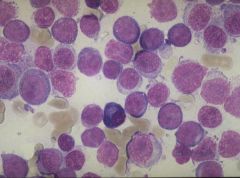
Acute Myeloblastic Leukemia without Cytologic Maturation (AML) |
|
|
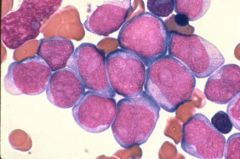
Acute Myeloblastic Leukemia without Maturation (AML) |
FAB M1
|
|
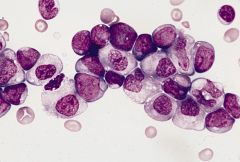
Acute Myeloblastic Leukemia with Maturation (AML) |
FAB M2
|
|
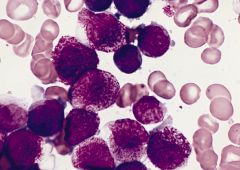
Acute Promyelocytic Leukemia (APL) |
FAB M3 and M3m
DIC is a possible complication of treatment (Schistocytes) |
|
|
APL - Microgranular variant |
|
|

Acute Myelomonocytic Leukemia (AMML) |
FAB M4
|
|
|
Acute Myelomonocytic Leukemia (AMML) - stains |
MPO pos SBB POS SE POS NSE pos NSE with NaF weaker pos PAS neg |
|
|
Acute Myelomonocytic Leukemia w/ Eosinophilia |
FAB M4Eo Similar to M4 with marrow eosinophilia in addition to myelo and mono (abnormal and immature) Cytochemical stains - sames as M4 |
|
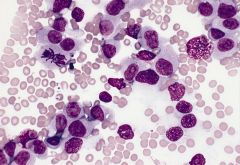
Acute Monocytic Leukemias (AMoL) - poorly differentiated |
FAB M5a
|
|
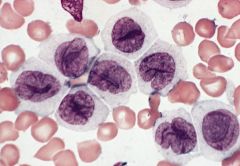
Acute Monocytic Leukemias (AMoL) -differentiated |
FAB M5b > 30% monoblasts and a preponderance of promonos and monos in blood and/or marrow MPO pos, SBB pos, SE neg, NSE pos and negative with NaF, PAS neg |
|
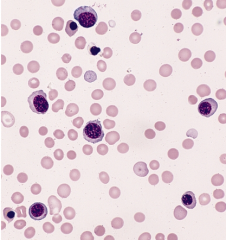
Acute Erythroid Leukemias - Acute Erythroleukemia |
FAB M6a > 50% rbc precursors and > 20% myeloblasts Other immature myeloid cells may be present May see Auer Rods Stains M5b: MPO neg, SBB neg, SE neg, NSE neg, PAS pos. If M5a, will have mixed staining indicative of myeloblasts |
|
|
Acute Erythroid Leukemias - Pure Erythroleukemia |
(M6b) Pure rbc precursors > 80% of marrow cellularity no myeloid component Stains M5b: MPO neg, SBB neg, SE neg, NSE neg, PAS pos. |
|
|
Acute Erythroid Leukemias - both forms |
|
|
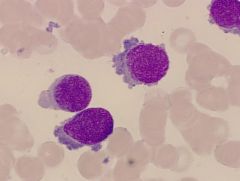
Acute Megakaryocytic Leukemia - |
|
|
|
Acute Leukemia of Ambiguous Lineage |
both lymphoid and myeloid characteristics
|
|
|
Acute Basophilic Leukemia |
Must distinguish from CML in blast phase |
|
|
Acute Panmyelosis with Myelofibrosis |
Malignant proliferation in all myeloid cell lines (granulocytes, erythroid and megakaryocytes) Bone marrow fibrosis |
|
|
Acute Lymphocytic Leukemias(ALL) |
|
|
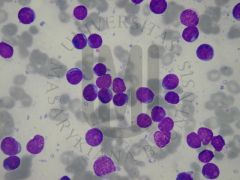
ALL Subclassifications - FAB L1 |
|
|
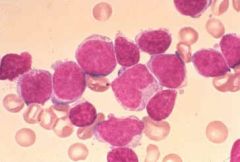
ALL Subclassifications - FAB L2 |
|
|
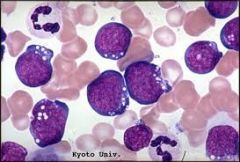
ALL Subclassifications - FAB L3 |
|

